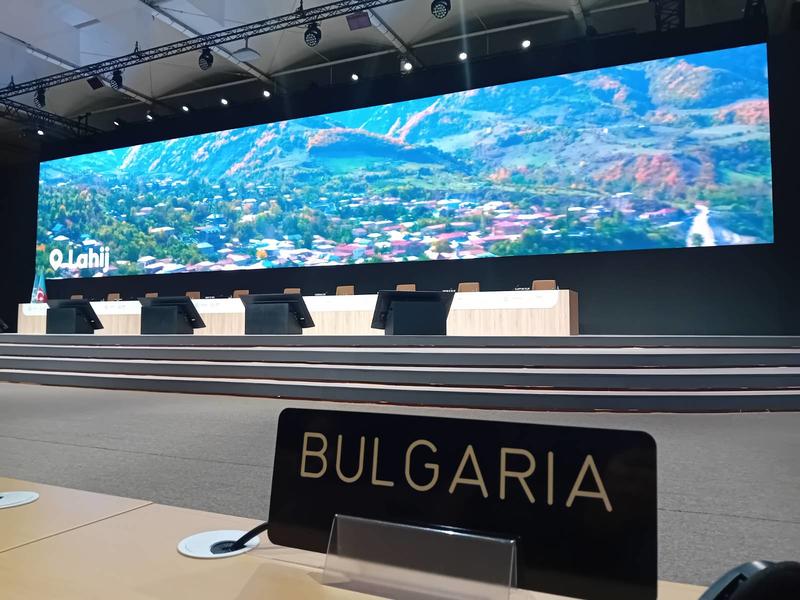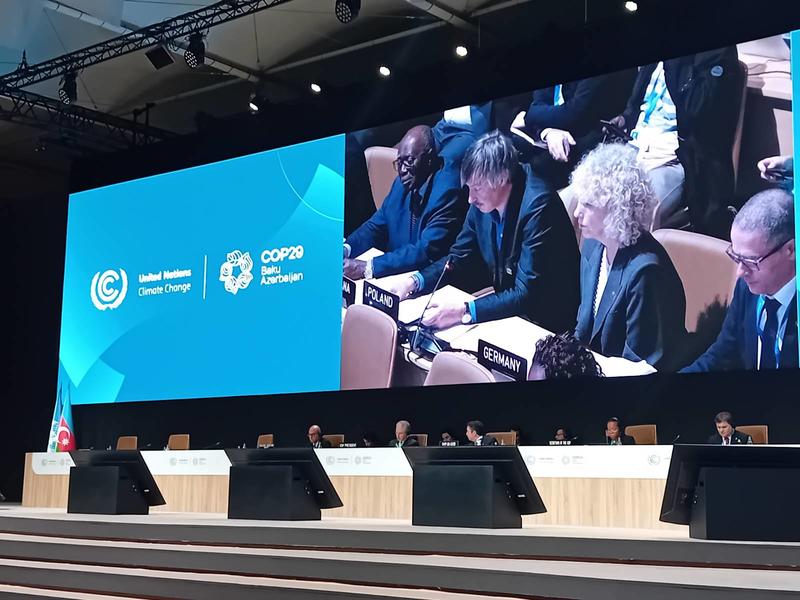The COP29 climate conference in Baku ended with mixed success
25 Nov, 2024 | 16:50At around 3 am Bulgarian time on Sunday, 24 November, the 29th Conference of the Parties to the United Nations Framework Convention on Climate Change (UNFCCC) - COP29 officially ended. A number of texts, discussed by almost 200 countries during the two weeks of the conference, were adopted. The most important among these texts is the decision on a New Collective Quantitative Target (NCQG), which consists of tripling climate action funding for developing countries by 2035.
The UN Climate Change Executive Secretary Simon Stiell described the adoption of the new target of 300 billion dollars per year as an "insurance policy for humanity" that will lead to more jobs, economic growth, and cheaper and cleaner energy for all. Many of the representatives of developing countries, who had been pushing for an increase in public funds to trillions of dollars annually, were deeply disappointed with the final result and fiercely criticized developed countries, the text of the decision, and the way the target was negotiated.
In fact, the final text proposed by the Azerbaijani Presidency of COP29 and discussed for over 30 hours on Friday and Saturday includes a call for a collective mobilization of at least 1.3 trillion dollars per year, but with the participation of all countries. The commitment by developed countries to provide 300 billion dollars per year by 2035 would be fulfilled with both public funds and private sector participation and through contributions from international development banks.
These considerations, added to the delay in meeting the current 100-billion-dollar-per-year target for developing countries, the future role of the incoming US administration of President Donald Trump and his threats to withdraw from the Paris Agreement, create uncertainty about the financing framework. It is felt most painfully by the most vulnerable – the least developed countries in Africa and small island states, which are most at risk from extreme weather events and the long-term adverse effects of climate change.
For their part, developed countries and the European Union, a party to the Convention, are facing a number of financial challenges and crises that limit their ability to provide assistance to developing countries. One of these challenges is related to the more ambitious commitments made on decarbonisation and the transition to climate neutrality, leading to long-term economic benefits but also to the need for large-scale short-term investments. At COP29, the EU insisted on reaffirming the commitments to reduce emissions at the global level, which were made in 2023 at COP28 in Dubai. After serious resistance from some fast-growing major economies and oil-exporting countries, the talks did not reach the desired consensus and will continue. In the meantime, all parties to the UNFCCC must confirm and supplement their commitments to reduce emissions by February 2025.
The biggest breakthrough of the conference, described as a success by most countries and observers, was the agreement on the transparent functioning of the voluntary market-based mechanisms under Article 6 of the Paris Agreement. The approved texts crown 9 years of negotiating efforts by the UNFCCC parties. They provide guidelines for the transparent functioning of the market-based exchange of carbon savings and contributions to carbon sinks, including from ecosystem restoration and the implementation of nature-based solutions. Strengthening the criteria, the monitoring process and improving the registries will help to avoid misreporting of emission savings and preventing speculative projects without climate benefits – problems observed in previous market-based mechanisms.
Another achievement of the conference was the adoption of an important decision on the so-called Global Adaptation Goal. This is not a single goal, but a series of thematic goals, which should be supported by a number of indicators related to the implementation and funding of adaptation measures in different areas. They stem from the comprehensive framework adopted at COP28 in Dubai, known as the “United Arab Emirates Framework for Global Climate Resilience” and including 11 global goals to be achieved by 2030. Seven are goals for adaptation actions in specific areas: water, health, biodiversity, food, infrastructure, poverty, cultural and historical heritage. The remaining four goals are related to the cycle of adaptation to climate change – risk and vulnerability assessments, adaptation planning, implementation and monitoring, and performance evaluation. The decision adopted at COP29 supports the expert work program for defining the indicators and legitimizes a new ambitious approach to achieving “transformational adaptation”. Work on technical-level indicators will continue in 2025, with the expectation of selecting up to 100 indicators (out of the initially proposed 5 000) to cover all objectives.
For Bulgaria, COP29 will be remembered for our constructive participation in the difficult negotiation process, the strengthening of regional cooperation with partners from South-East Europe in the field of climate change and energy transition, and a number of successful events with high-level guests at the Bulgarian pavilion. Due to the ongoing blockade of the nominations of EU countries within the processes for determining hosts and positions within the UNFCCC, imposed by Belarus and Russia, our country was prevented from hosting COP29, but for a year, together with Armenia, it co-chaired the Eastern European Regional Group, which nominated Azerbaijan as the Chair of the conference. Despite the challenges in the decision-making process in the Group, our country played a significant role in building constructive coalitions and finding consensus on the essential issues that materialized as decisions of COP29.
The annual COP30 conference in 2025 will be held in Belem, Brazil, while Turkey and Australia compete to host COP31.

